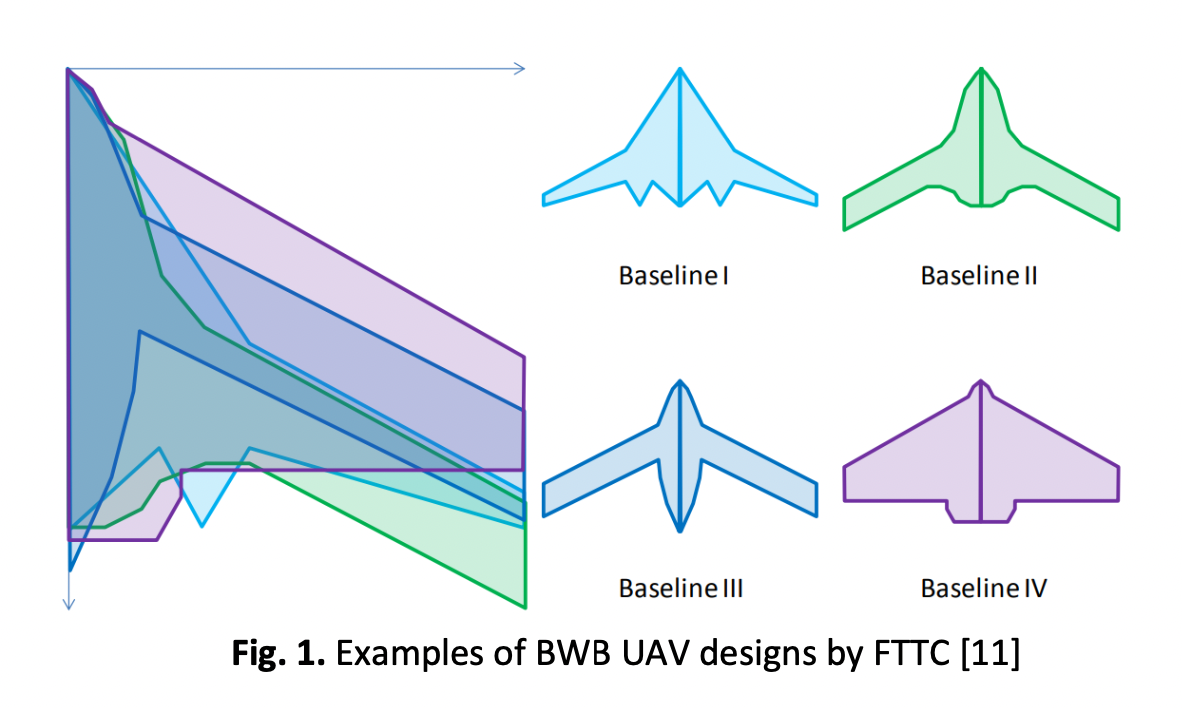Optimization of a Blended-Wing-Body Unmanned Aerial Vehicle Design for Maximum Aerodynamic Lift-to-Drag Ratio
DOI:
https://doi.org/10.37934/cfdl.15.3.1221Keywords:
Blended-wing-body, lift-to-drag ratio, parametric study, wing span, sweep angle, unmanned aerial vehiclesAbstract
Although unmanned aerial vehicle (UAV) has found many applications in various fields, its operation has been constrained by its low flight endurance. To date, several design efforts are pursued to improve this performance and one of them is the exploration of blended-wing-body (BWB) design. In this study, parametric study is conducted on the BWB UAV design of Baseline-VII that is developed by Flight Technology and Test Center (FTTC), Universiti Teknologi MARA Shah Alam, Malaysia. The primary goal is to optimize the current Baseline-VII design for maximum lift-to-drag ratio, which in turn implies a higher flight endurance. Three design parameters are considered: inboard wing sweep angle, outboard wing sweep angle and also inboard wing span. A full-factorial design of experiments (DoE) is applied to set the total 27 design case settings for this study, with three different values considered for each design parameter: 10°, 25° and 50° for inboard and outboard wing sweep angles, and 200 mm, 300 mm and 400 mm for the inboard wing span. The computer-aided design (CAD) models for the design cases are constructed using Solidworks and the resultant aerodynamic lift-to-drag ratio is found through computational fluid dynamics (CFD) simulation analysis using ANSYS Fluent. The collected data is then statistically analysed using regression analysis in MINITAB to construct a representative regression model that aptly capture the effects of the varied design parameters on the design aerodynamic lift-to-drag ratio. Based on the results, it has been found that the maximum lift-to-drag ratio for the modified Baseline-VII UAV design is 2.8119, which is obtained with optimal settings of inboard wing sweep angle = 17.2727°, outboard wing sweep angle = 20.9091° and inboard wing span = 400 mm. This is about 28.4% increment of lift-to-drag ratio from the original Baseline-VII design.



























